Tall meadow-rue (
Thalictrum dasycarpum) is a wide-ranging native perennial, occurring along rivers, creeks and small bodies of water and in other habitats with moist soil. It has a tall, upright form, and large cream-colored flower heads and interesting foliage arrive in late spring. Combine this elegant 5-foot-tall plant with other tall, moisture-loving native perennials.
Even though this is primarily a wind-pollinated plant, the male flowers provide an important source of pollen to bees as well as other insect pollinators, including beetles and flies. If you have the space and right conditions for tall meadow-rue, I encourage you to give it a try in your garden or landscape.
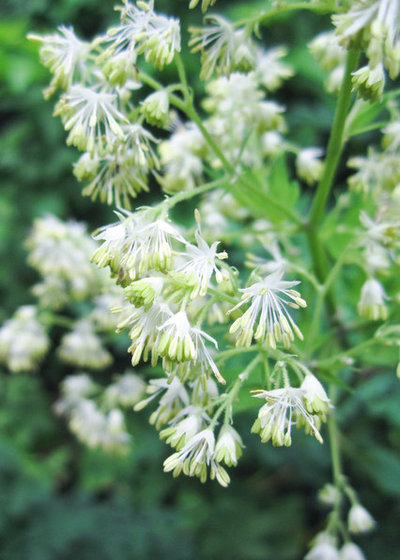
Holm Design & Consulting LLC
Botanical name: Thalictrum dasycarpumCommon names: Tall meadow-rue, purple meadow-rue
Origin: Occurs in central North America; absent from Oregon, California and Nevada in the west and the coastal states from Maine to Florida in the east; in Canada occurs from British Columbia eastward to Quebec
Where it will grow: Hardy to -45 degrees Fahrenheit (USDA zones 2b to 9a; find your zone)
Typical plant communities: Moist soil along riparian areas and in woodland edges and open, low-lying sites
Soil requirement: Mesic to moist, loam to clay soil
Light requirement: Partial shade to full sun
Mature size: 60 inches tall and 18 to 24 inches wide
Benefits and tolerances: Tolerant of shade, periodic flooding and saturated soil; in my experience, deer and rabbits do not browse the stalks or foliage
Seasonal interest: Frilly cream-colored flowers that open in late May or June; softly lobed blue-green foliage that resembles that of columbine (
Aquilegia spp)
When to plant: Spring or fall; bare-root and potted plants are available from many native-plant nurseries
Shown: Close-up of the male flowers
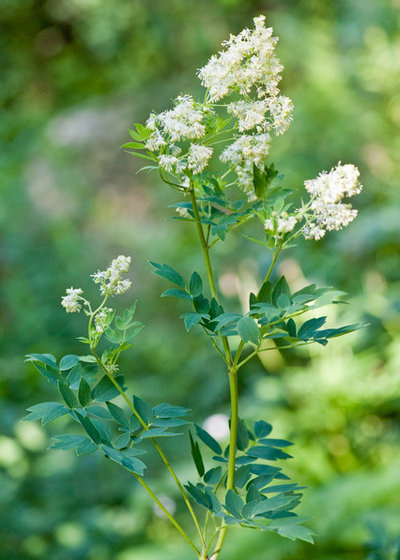
Holm Design & Consulting LLC
Distinguishing traits. Tall meadow-rue has finely cut, softly lobed foliage on tall flower stalks that bear cream-colored to white flowers. It has a reliable upright, sturdy form when combined with other tall plants.
Shown: Close-up of a flower stalk with foliage
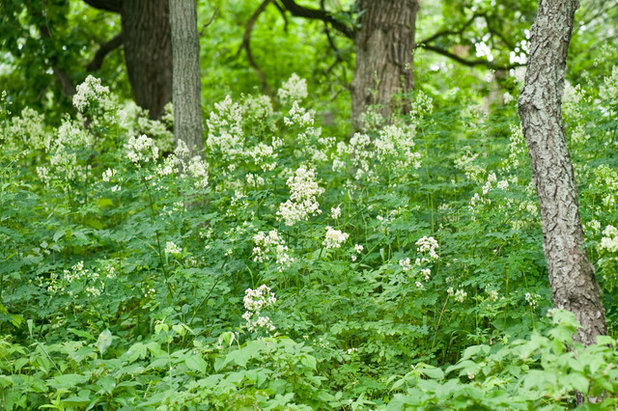
Holm Design & Consulting LLC
How to use it. Use tall meadow-rue in any moist soil, along a pond edge or stream, in a lakeside shoreline planting, in a large bioretention basin or rain garden, or in a partially shaded perennial border with clay or silty soil. It can also be naturalized in a woodland floodplain in partial shade.
Combine tall meadow-rue with other native moist-soil-tolerant perennials, including Canada anemone (
Anemone canadensis), common ironweed (
Vernonia fasciculata), common boneset (
Eupatorium perfoliatum), native loosestrifes (
Lysimachia spp) and swamp milkweed (
Asclepias incarnata).
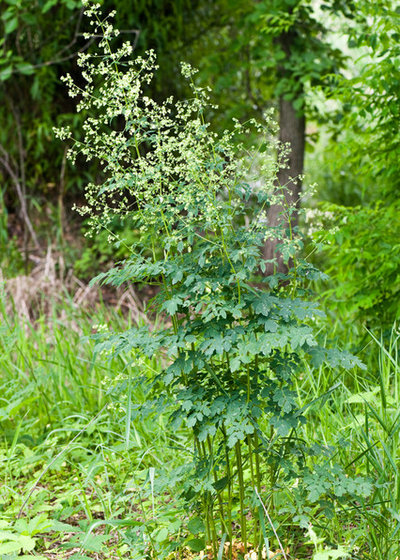
Holm Design & Consulting LLC
Planting notes. Tall meadow-rue can be transplanted fairly easily, but it is best to move the plant in early spring before the flower stalks get too tall. Otherwise, cut back the stalks in late fall, then transplant.
Tall meadow-rue is dioecious, with male and female flowers occurring on separate individual plants. The male flowers are showier than the female flowers. Purchase both male and female plants if you want to have a seed source produced by female plants, or plant at least three to five plants to hopefully ensure you have both sexes if the individual ones are not known.
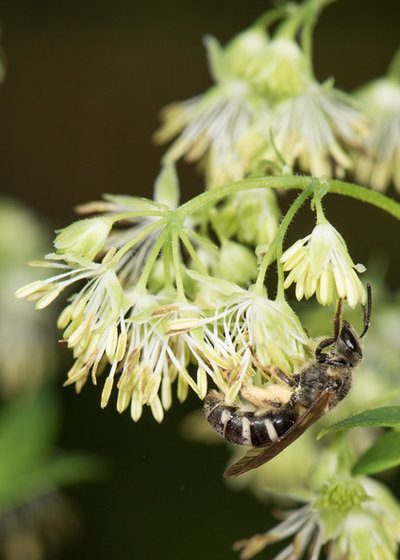
Holm Design & Consulting LLC
Pollinator notes. Tall meadow-rue is unusual in that it is a wind-pollinated plant. Pollen is produced on the male plants, and the wind carries it to the female flowers. The male flowers, however, attract a number of pollinators, including bees, flies and beetles, that collect or feed on the pollen. I have not observed pollinators visiting the female flowers, but this is a possibility.
Shown: A female small sweat bee (
Lasioglossum sp). Sweat bees are one of the most common visitors to the male flowers of tall meadow-rue.
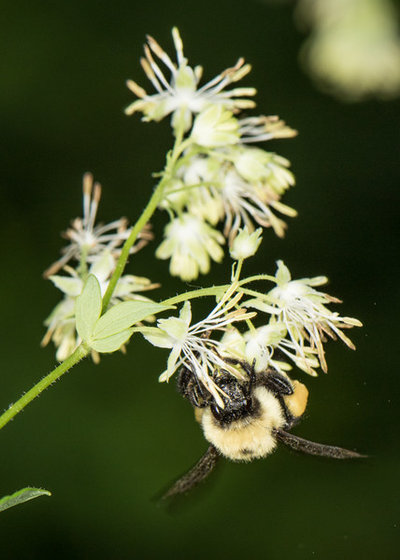
Holm Design & Consulting LLC
Shown: A female worker bumble bee (
Bombus sp)





